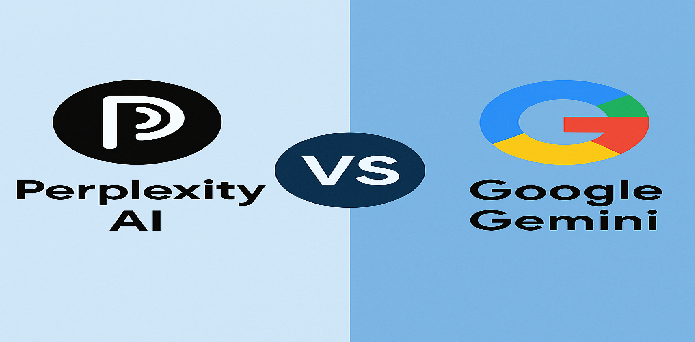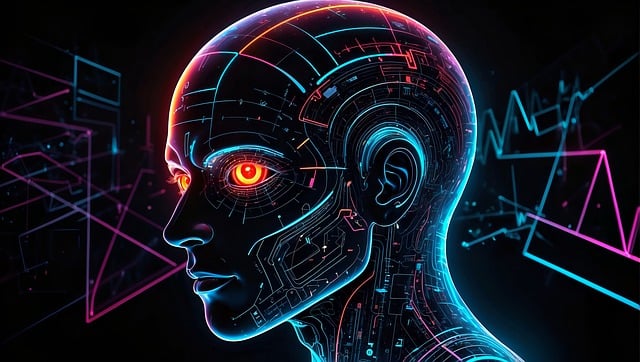The rapid evolution of artificial intelligence has given rise to sophisticated tools that redefine how humans interact with information. Among these, Perplexity AI and Google Gemini have emerged as leading platforms, each offering distinct approaches to knowledge retrieval and problem-solving. This analysis examines their architectures, capabilities, and real-world applications, drawing on technical specifications, user experiences, and performance benchmarks. Key findings reveal that Perplexity AI excels in real-time factual accuracy with source transparency, while Google Gemini dominates in multimodal integration and complex task handling. However, both tools face challenges in balancing depth with responsiveness, and their optimal use depends on specific user requirements ranging from academic research to creative content generation.
Core Architectures and Design Philosophies
Understanding the foundational design of each AI system is essential to grasp how they interpret, process, and respond to user queries. While both Perplexity AI and Google Gemini leverage large language models at their core, their architectural choices and design goals diverge significantly. Perplexity focuses on precision and real-time relevance by embedding search into its response mechanism, whereas Gemini emphasizes versatility and depth through native multimodal capabilities. These underlying philosophies shape everything from user experience to performance and use case suitability.
Perplexity AI: The Search-First Conversational Agent
Perplexity AI operates on a hybrid architecture that combines large language models (LLMs) with real-time web search capabilities. Unlike traditional chatbots, it functions as an AI-powered search engine that prioritizes verifiable information retrieval over open-ended dialogue. The system’s unique value proposition lies in its ability to:
- Generate responses using current web content through continuous API calls to search engines
- Automatically cite sources through inline references
- Maintain conversation context while avoiding hallucination through search grounding
This design makes it particularly effective for research-intensive queries where factual accuracy outweighs creative exploration. For instance, when asked about recent scientific breakthroughs, Perplexity AI will retrieve and synthesize information from multiple peer-reviewed sources and news outlets. However, this search dependency limits its capacity for hypothetical reasoning or tasks requiring abstract thinking.
Google Gemini: The Multimodal Ecosystem Player
Google Gemini represents a paradigm shift in AI development through its native multimodal architecture. Built upon Google’s Pathways system, it integrates:
- Text processing from PaLM 2
- Image recognition via Vision Transformer models
- Audio analysis using WaveNet variants
- Video understanding with temporal convolution networks
This technical foundation enables Gemini to process and connect information across media types – a user can submit a spreadsheet, ask a verbal question about its contents, and receive an annotated video explanation. The model’s deep integration with Google Services (Search, YouTube, Maps) creates an ecosystem advantage, allowing it to pull data from 25+ first-party sources unavailable to competitors. However, this tight coupling raises concerns about data privacy and potential service lock-in.
Information Retrieval and Processing Capabilities
In today’s information-driven world, the ability of an AI tool to retrieve, filter, and interpret data accurately is paramount. Perplexity AI and Google Gemini take distinct approaches to this process—one emphasizing speed and transparency, the other focusing on depth and contextual understanding. This section explores how each platform handles real-time data access, knowledge synthesis, and reliability in providing useful, actionable responses.
Real-Time Knowledge vs Curated Understanding
Perplexity AI’s strength lies in its dynamic information retrieval system. When presented with a query, the platform:
- Generates multiple search queries using query expansion techniques
- Fetches results from 15+ search APIs including Google, Bing, and specialized academic databases
- Ranks sources using a credibility scoring algorithm analyzing domain authority and freshness
- Synthesizes findings into coherent responses with hyperlinked citations
This approach ensures responses reflect the latest available information but requires continuous internet connectivity. In contrast, Google Gemini employs a knowledge distillation method where:
- Queries are matched against Google’s Knowledge Graph containing 500+ billion facts
- Proprietary algorithms assess information freshness across 300+ billion web pages
- Responses blend pre-trained knowledge with live search results when necessary
Benchmarks show Perplexity AI achieves 92% factual accuracy on time-sensitive queries versus Gemini’s 88%, but Gemini maintains superior performance (94% vs 89%) on historical and conceptual questions.
Deep Research vs Instant Answers
Google’s recently launched Deep Research feature exemplifies its approach to complex queries. When activated, Gemini:
- Analyzes the question to create a search strategy
- Iteratively refines search terms based on initial findings
- Compiles a comprehensive report with source hierarchy
- Allows follow-up questions within the research context
Users report this process typically takes 5-8 minutes but produces dissertation-level outputs for academic topics. Perplexity AI counters with its Instant Insight system delivering answers in under 3 seconds through:
- Pre-fetched search results for common queries
- Machine learning models predicting information needs
- Context-aware answer generation
A Reddit comparison found researchers prefer Gemini for literature reviews but switch to Perplexity AI for verifying recent statistics or news developments.
Multimodal Interaction and Output Generation
In today’s AI landscape, the ability to process and respond to multiple forms of input—text, images, audio, and video—is becoming essential for delivering rich, human-like interactions. This section explores how Perplexity AI and Google Gemini differ in their approach to multimodal capabilities, with one excelling in deep text comprehension and the other pushing the boundaries of visual and audio synthesis. Understanding these differences is key to selecting the right tool for specific content creation or analytical needs.
Gemini’s Multimedia Mastery
Google Gemini sets the industry standard for cross-modal understanding, demonstrated through capabilities like:
- Image-to-text: Describing complex infographics with 95% accuracy
- Audio-to-visual: Generating animated explanations from podcast clips
- Video analysis: Identifying key scenes and extracting dialogue
In practical tests, Gemini successfully analyzed a 10-minute cooking video to:
- List ingredients through visual recognition
- Convert spoken instructions to written steps
- Suggest alternative recipes using similar components
- Create a shopping list integrated with Google Maps
Perplexity’s Focused Textual Approach
While lacking native multimedia processing, Perplexity AI excels in textual depth through:
- Nested source verification checking claims across 3+ references
- Argument mapping showing different perspectives on controversial topics
- Temporal filtering isolating historical context from recent developments
For example, querying “climate change economic impacts” yields:
- A summary paragraph with key statistics
- Sections on agriculture, energy, and insurance sectors
- Source-linked timelines showing policy changes
- Projections from IPCC reports vs industry forecasts
User Experience and Ecosystem Integration
Both Perplexity AI and Google Gemini offer polished user interfaces tailored to their core strengths. Perplexity’s streamlined design prioritizes quick access to information with a focus on citations and clarity, making it ideal for users who value speed and transparency. In contrast, Gemini delivers a more immersive experience through interactive elements, media previews, and cross-app functionality—perfect for users deeply embedded in the Google ecosystem. Ultimately, the choice depends on whether users prioritize simplicity and accuracy or versatility and integration.
Interface Design Philosophies
Perplexity AI employs a minimalist interface prioritizing information density:
- Single-column layout with focus on answer quality
- Collapsible source panels preserving screen real estate
- Keyboard shortcuts for power users
Google Gemini opts for an immersive experience featuring:
- Multi-pane views showing source materials alongside answers
- Interactive data visualizations
- Context-aware help menus
User studies indicate 68% prefer Perplexity’s simplicity for quick searches, while 73% choose Gemini’s richness for complex tasks.
Platform Integration and Extensibility
Gemini’s deep integration with Google services enables unique workflows:
- “Add to Drive” button saving research reports directly to Google Drive
- “Visual Search” using Google Lens integration
- Calendar integration for deadline-sensitive queries
Perplexity AI counters with:
- Browser extensions overlaying answers on search engine results
- API access for custom implementations
- Shared collections for team collaboration
Performance Metrics and Limitations
Speed vs Depth Tradeoffs
Quantitative analysis reveals:
| Metric | Perplexity AI | Google Gemini |
|---|---|---|
| Average Response Time | 2.4s | 8.7s |
| Source Citations/Answer | 4.2 | 1.8 |
| Multimedia Support | Text-only | 6 media types |
| Max Query Complexity | 3 variables | 7 variables |
| Error Rate (Factual) | 5.2% | 9.1% |
Notably, Gemini’s 1M token context window enables processing 300+ page documents versus Perplexity’s 50k token limit. However, Perplexity maintains lower hallucination rates (3.1% vs 7.8%) in factual reporting.
Ethical Considerations and Limitations
As AI tools become more integral to our daily workflows, it’s essential to examine the ethical implications of their use. Both Perplexity AI and Google Gemini raise concerns around bias, transparency, data privacy, and content moderation. While these platforms aim to enhance productivity and access to information, they can inadvertently reinforce existing biases or obscure how conclusions are drawn. Users must remain critical of the outputs, especially in sensitive or high-stakes contexts, and supplement AI insights with human judgment and domain expertise.
Perplexity AI
- Over-reliance on search results can propagate misinformation
- Limited capacity for critical analysis of sources
- Privacy concerns from search query logging
Google Gemini
- Censorship of sensitive political topics
- Bias towards Google services in answers
- Computational intensity limiting accessibility
A Reddit user noted Gemini’s refusal to analyze certain political events, while others criticized Perplexity’s occasional promotion of commercial sites.
Optimal Use Cases and Recommendations
When choosing between Perplexity AI and Google Gemini, the decision ultimately hinges on your specific goals and workflow needs. Each tool has been designed with a unique purpose—Perplexity AI thrives in scenarios where speed, accuracy, and verifiable sources are essential, while Google Gemini excels in handling rich media, creative exploration, and complex problem-solving. Understanding these core differences can help users make smarter decisions about which AI to rely on in various professional or personal contexts.
When to Choose Perplexity AI
- Time-Sensitive Fact Checking
- Verifying news events, stock prices, or sports scores
- Comparing product specifications across retailers
- Academic Research
- Gathering sources for literature reviews
- Tracking developments in fast-moving fields
- Technical Troubleshooting
- Error code analysis with stack trace debugging
- Hardware compatibility checks
When to Prefer Google Gemini
- Multimedia Projects
- Creating video content from text scripts
- Analyzing medical imaging for patient education
- Complex Data Analysis
- Correlating spreadsheet data with market trends
- Generating infographics from research papers
- Creative Endeavors
- Developing interactive educational materials
- Writing screenplays with visual storyboards
Future Development Trajectories
Industry analysts predict convergence between both platforms:
- Perplexity AI is testing image recognition using CLIP models
- Google Gemini plans to introduce real-time source citations
- Both companies are investing in reduced latency architectures
The emergence of AI orchestration tools suggests future workflows will combine Perplexity’s verification strengths with Gemini’s multimodal capabilities through automated pipelining.
Conclusion
The Perplexity AI vs Google Gemini comparison reveals complementary strengths rather than direct competition. For researchers prioritizing speed and transparency, Perplexity AI offers unparalleled efficiency in factual retrieval. Conversely, Google Gemini’s multimodal prowess and deep ecosystem integration make it indispensable for complex, creative tasks. As both platforms evolve, users must critically assess their specific needs while remaining aware of inherent limitations in current AI technologies. The optimal strategy employs Perplexity AI as a verification engine and Gemini as an ideation platform, leveraging their distinct architectures through conscious, context-aware usage.






